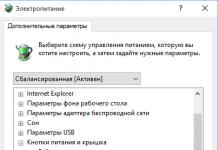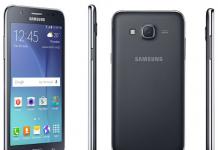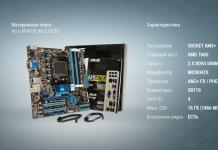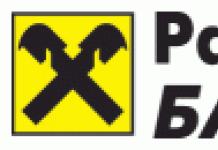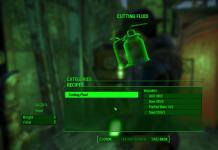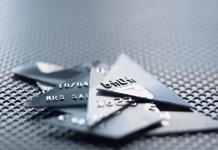Talk about what function to temporarily disable USB port in Windows 10- this is something super natural, it’s just not worth it, and it’s all because this option itself appeared relatively long ago (back in the edition of Windows 7), but just at that moment, there were rumors about this kind of opportunity there were few programs, and therefore, most PC users learned about the new option only when the “top ten” appeared.
What is the purpose of temporarily disabling the USB port in Windows 10?
- The original purpose of this option implied the ability to automatically configure the power plan (this is especially true for laptops) in order to significantly increase the battery life of the laptop by disconnecting several USB ports. It is precisely disabling USB ports that allows your hardware not to constantly waste electricity to maintain 100% functioning of USB ports that are not currently in use.
- Also, this option in Win 10 can be used to disable the USB port for a while, provided that you are trying to connect some device to it, but when connecting, you see an error.
The process of deactivating a USB port is as follows
Initially, you will have to open the “Control Panel” of your OS; to do this, you need to enter the phrase “Control Panel” in the OS search bar located on the taskbar, and then select the appropriate item. Now, find the “Power Options” icon and click on it to get to the corresponding section of the program.
Please note that if you cannot find the “Power Options” item, then you most likely have the mode displaying categories turned on and, accordingly, you will have to first click on the “Hardware and Sound” item and only after that, on the section in which you need to get in.


In the new window, you won’t have to select anything other than the “Change advanced power settings” item.

And now, the home stretch, because this is where it turns on and off USB port feature in Windows 10. In order to deactivate a USB port, follow the following path: initially select “USB Options” -> then click on “Option to temporarily disable USB port” -> select the item “Prohibited” -> click on the “Ok” button.

In order to enable the USB port, you can make a similar log of actions described above, but only at the end, you must select “Allowed”.
It is worth understanding that this method of saving power and turning off the USB port when errors occur related to its operation is not a 100% panacea that will always and everywhere help you, but be that as it may, in some moments of the laptop’s life, this The function works 100%.
Read how to diagnose and fix a broken USB port on a computer or laptop. Ways to solve the problem at home. Recently, the amount of information surrounding us has increased enormously. We receive information from everywhere: personal computers, mobile phones, the Internet, television, radio, etc. The main types of professional activities have been completely, or for the most part, transferred to the use of computer devices. Documentation, archives, correspondence, databases, etc. - This is only a small part of where personal computers are used. The main requirements for computer devices are their speed, reliability and the ability to store large amounts of information.
One of the main roles in the modern world is played by the mobility of information and the ability to access it at any time. There is often a need to use certain documents in a variety of places, and it is necessary that access to information be constant.
Recently, cloud data storage has become very popular, allowing you to store a large amount of personal information and provide access to it at any time. However, if the user, for any reason, does not want to store information in cloud storage, for example, to protect it from possible access by third parties or possible hacking, then, in this case, he uses external "USB drives" and disks connected to the computer via "USB port".
This is quite convenient, since manufacturers of computer devices supply their products with a sufficient amount "USB ports". And the user can always obtain or download the necessary information to his device through such "USB connection".
However, not in all cases the process of exchanging information through "USB port" may end successfully. It often happens that the day before you connected "USB drive" to the computer, but today it is not detected. However, this disk works on others "USB ports" your computer. Then, probably, the problem may be directly in a certain "USB port".
This is one of those computer problems that happens so rarely that users tend to blame it on themselves. "USB drive". Therefore, they simply switch it to another place and continue working. Without assuming that "USB port" may be faulty and not given proper attention.
However "USB devices" are still at the peak of their popularity and show no signs of slowing down. "USB flash drives", "USB chargers" for your phone, "USB" to connect "iPod", "USB coffee warmers", "USB" for connecting additional devices (for example, lamp, camera, microphone, etc.) - as you can see, "USB connection" used everywhere! Therefore, it is imperative that all your ports are in working order.
Below we will present certain steps that will help you check your "USB port" for a problem of definition "USB devices", and offer some tips to fix it. After each action you perform, check to see if the problem is resolved. If the action does not help, then move on to the next one.
A prerequisite for testing and troubleshooting "USB port" is a requirement to login "Windows" with an administrator account. If the computer is your own personal computer, then you are most likely already signed in with that account. For a work (office) computer, you will have to ask your system administrator for help.
Physical examination
The first thing you need to do is check "USB port" for physical damage.
A simple test is to connect your "USB drive" into the port and see how easily the drive moves in the port connector. But be careful not to cause an additional hardware problem if you don't already have one. If you don't know how durable it should be "USB port", perform the same action on the control port that you know works and compare them both.
If the amplitude of the swings is large enough and the connector is loose, then go to the end of this article, where we will talk about problems with the equipment "USB port". Otherwise, continue with the following steps.
Restart your computer
Before you take any steps, try the old tech fix: turn off your computer and turn it on again. Sometimes this helps by making the operating system scan the hardware, e.g. "USB port", and restore its functionality.
If this method didn't work, then it's time to use the app.
Use the application
The application contains information about all devices connected or installed on your personal computer, and provides the ability to configure, configure and monitor each of them.
The application window can be opened in various ways. As an example, we will show several of these methods, and you can use the one that is most convenient for you.
Method one: Open an application window, for example, right-click on the file explorer shortcut on the desktop "This computer", and select a section from the pop-up menu "Control".

This application allows you to fully manage your computer and related utilities. In the left pane of the application window, select the partition located in the folder in the directory “Computer management (local)”.

Method two: On "Taskbars" In the lower left corner of the desktop, find the button "Start" and right-click on it, or press the keyboard shortcut together "Windows + X". In the pop-up menu that opens, select the section from the list of available applications.

Method three: Press the keyboard shortcut together "Windows + R" and open the dialog box "Run". Enter in the field "Open" team "devmgmt.msc", and then press the key "Enter" on the keyboard or button "OK" to execute the command.

The application will open and you will see the following window:

Verifying Universal Serial Bus Controllers "USB"
The application shows all categories of devices installed on your computer. At this point, you need to review the Universal Serial Bus controller entries. Click the arrow next to the section to expand the subdevices. You will see a list of available controllers similar to our example:

This list will not have much meaning to you. However, it is important to pay attention to the following entry: "Intel(R) 7 Series/C216 Chipset Family USB Enhanced Host Controller". This is a special type "USB controller" directly for our computer, it will be different for you. But the key words here are "USB Host Controller". Find them in your "Device Manager". If you can't find them, then this may be your problem.
Checking the hardware configuration
Click the button "Update hardware configuration" on the application toolbar under the main menu ribbon shown in the figure below. This will force your computer to recheck all your hardware and update it. This action can help and you will see "USB Host Controller" on your list. If the controller does not appear in the list, it means that the problem has not been resolved.
Removal "USB Host Controllers"
At this point things get a little more complicated. You will have to remove all controllers in the application. Please note that if you are working on a personal computer and your keyboard and mouse are connected to it "USB ports", then after removing the controllers, they will stop working.
In the section, right-click on the first host controller. In the pop-up menu that opens, select a section from the list of available actions "Remove device".

Repeat this process for each remaining "USB Host Controller". Now restart your computer. This will force the computer to reinstall and configure those controllers again, and may be able to fix the controller that is not responding.
Clear
There is a possibility that in "Device Manager" You may see previously installed devices that are no longer connected to your computer. Sometimes device drivers remain installed on your computer long after the device has been disabled. It's time to check and clean the application by removing old and unused drivers.
If this method does not help you, then proceed to the next steps.
Disable
"USB Port Temporary Disable Option" is a power saving option in the operating system "Windows", which suspends the power supplied to "USB device" to increase your computer's battery life. This is a good feature that allows you to save power, but in rare cases, this setting may block the connected "USB device".
You can disable "USB Port Temporary Disable Option" two different methods: using the power settings settings and through "Registry Editor".
Method one: Using power settings settings
Open the application in any of the following ways: We have not described all possible methods, but have focused on the most common and most convenient of them.
Method one: Press the button "Start" in the lower left corner of the desktop and open the main user menu "Windows". In the menu sidebar, click the gear icon. Or, using the scroll bar, move the slider down and select the section from the list of installed applications and programs.

Method two: Right click on the button "Start" or press the keyboard shortcut together "Windows + X" and open the pop-up menu. From the list of available applications, select the section.

Method three: Click in the lower right corner of the desktop on "Taskbars" button "Windows Action Center". A sidebar will appear from the right edge of the screen. At the bottom of the Action Center panel is a preset row of quick action buttons. In your case, select the button.

Method four: Press the keyboard shortcut "Windows + I" together and open the app directly.

In the main application window, select a section "System" shown in the figure above. Then in the window that opens, select section in the left panel. In the right pane, move the scroll bar down to the section "Related Options" and click the text link "Advanced power options".

In the window that opens "Power supply" select text link.


Using the scroll bar, find the section in the main settings window "USB Settings". Expand a section using the control (icon "plus" in a square cell) and then the next section "USB Port Temporary Disable Option". Set parameter settings in cells "On battery" And "Offline" by selecting the value in the pop-up menu opposite each parameter "Forbidden".

Click the buttons "Apply" And "OK" to save parameter settings. Now the system will not temporarily shut down "USB ports" to save energy.
Method two: using the app "Registry Editor"
Note: It is important to remember that any actions with the registry must be performed with great care, as this can lead to irreversible consequences. If changes to the registry are made incorrectly, the operating system may crash, problems may arise with the operation of certain computer services, it may stop loading, or the system may completely fail. Take care in advance to create a backup copy of the registry using the built-in capabilities of the application "Registry Editor". In the window main menu ribbon "Registry Editor" click tab "File", and in the menu that opens, select the section "Export…". Give the copy of the registry a name and save it anywhere you want. Now, if necessary, you can always use your saved copy.
Open dialog box "Run"(for example, by pressing the keyboard shortcut together "Windows + R"), then into the field "Open" enter the command "regedit" and press the button "OK" or key "Enter".

Click the button "Yes" in a User Account Control message "Windows": “Do you want to allow this app to make changes to your device?”, and the application window "Registry Editor" will be open.
In the left pane of the window, navigate to the following key:
You can manually search and open each item along the path to the specified key, or copy the key (HKEY_LOCAL_MACHINE\SYSTEM\CurrentControlSet\Services\USB\DisableSelectiveSuspend) and paste it into the address bar of the window under the main menu ribbon. In this way, you can avoid possible mistakes, since there are many similar directories in the window and it is quite easy to get lost and select the wrong section.
If "USB key" does not exist in your registry, you will have to create it.
To do this, go to the last available key section "HKEY_LOCAL_MACHINE\SYSTEM\CurrentControlSet\Services", then click the tab in the main menu ribbon "Edit". In the pop-up menu that opens, open the submenu "Create" and select "Chapter".

Give the new partition a name "USB". Then in this section in the right pane of the window you need to create a new parameter "DisableSelectiveSuspend". To do this, right-click on an empty space in the window, open the submenu "Create" and select a section "DWORD value (32 bits)".

Now click on your newly created parameter "DisableSelectiveSuspend" right-click and select partition from the pop-up menu "Change…".

In the parameter change window "DWORD" enter in the field "Meaning" figure "1". Then click the button "OK" to save the changes made to the parameter.

Now "USB Port Temporary Disable Option" is disabled on your computer. For the changes you made to take effect, you will need to restart your computer.
Check if your faulty one is working now "USB port"? If not, then the most likely cause is physical damage to your "USB port".
Fix damaged hardware
If the port still does not work, then it is quite possible that the problem is related to the hardware. "USB ports" quite fragile and "USB flash drives" can act as leverage on them, destroying the electrical connectors inside the ports. This is observed quite often in laptops, when the user puts the laptop in a bag and forgets to take it out "USB drive". Usually such a malfunction can be corrected. You'll likely need to call a computer repair professional to fix the problem, or try to do it yourself by searching for repair methods online. However, the second method is suitable for those people who have quite a lot of experience in repairing computer devices.
Conclusion
There are several ways to restore your non-working "USB port". The cheapest and easiest solution is to fix it "USB port" in case of a driver or operating system problem. Even if the problem is identified at the hardware level, it can still be fixed quite simply and inexpensively.
If you have other troubleshooting tips for "USB ports", or have you ever had to repair "USB port", or you know of possible software tools that could help troubleshoot your "USB port", then let us know about it in your comments.
In fact, this function has been available since Windows 7 and, by and large, the procedure has not changed since then. Let's look at it using the current version of Windows 10 as an example. As a rule, by default, the function of temporarily disabling the USB port is activated at least for the energy saving mode. Actually, in order to save battery, the system pauses the operation of USB ports during idle moments, so the corresponding settings can be found in the “Power Options” section of the system Control Panel.
We have already discussed how to open the Control Panel in Windows 10 Creators Update. The most convenient way is to use the search bar on the taskbar, where you just need to type “Control Panel”, in which go to the “Power Options” section (if the category display mode is turned on, then first You must click on “Hardware and Sound”). In the window that opens, go to the settings of the desired power supply scheme.

On the next screen, you need to click on “Change advanced power settings.”

A new window will open with a complete list of additional parameters, in which you need to find the item USB Options > Temporarily Disable USB Port Option and set the value "Forbidden", then click OK to save the changes. The function is turned back on in the same way.

It is worth noting that the above example is not a panacea for all possible problems associated with the operation of USB devices; the reasons can be very different, but nevertheless it can help in situations where the problem is related to the operation of this function.


